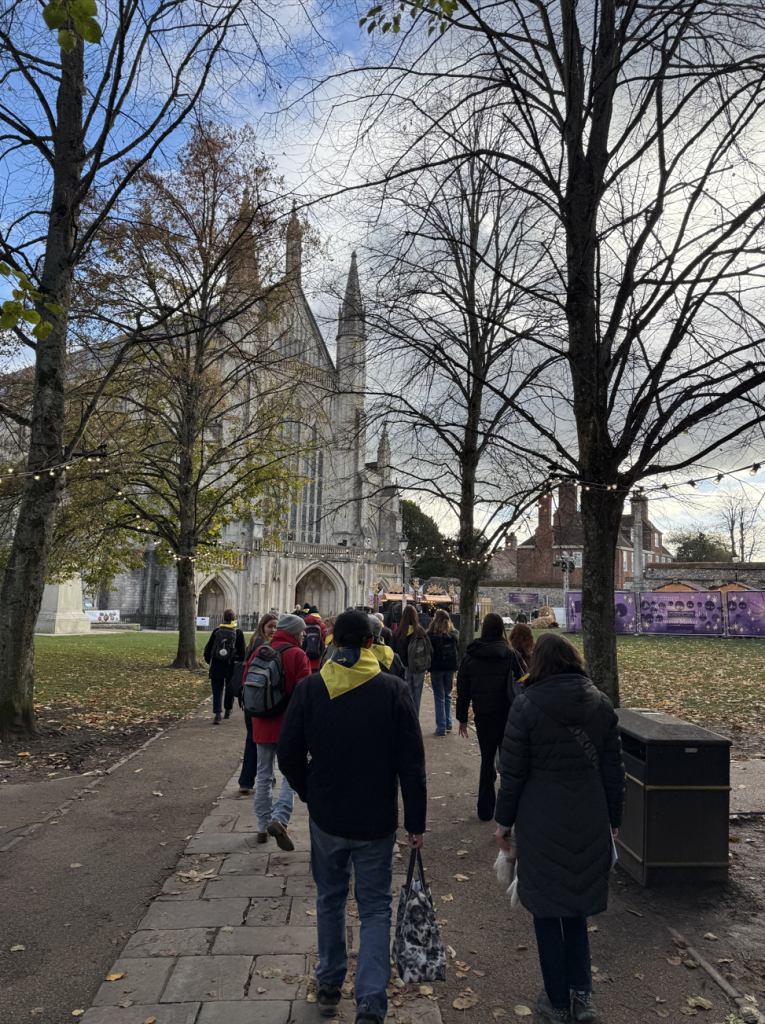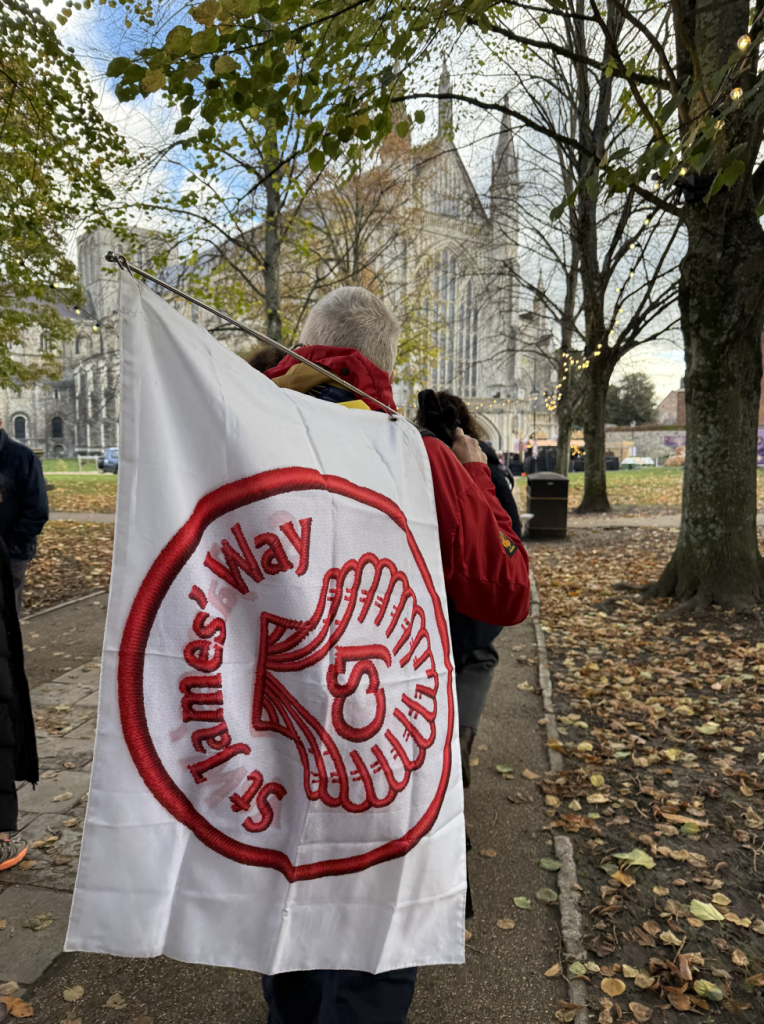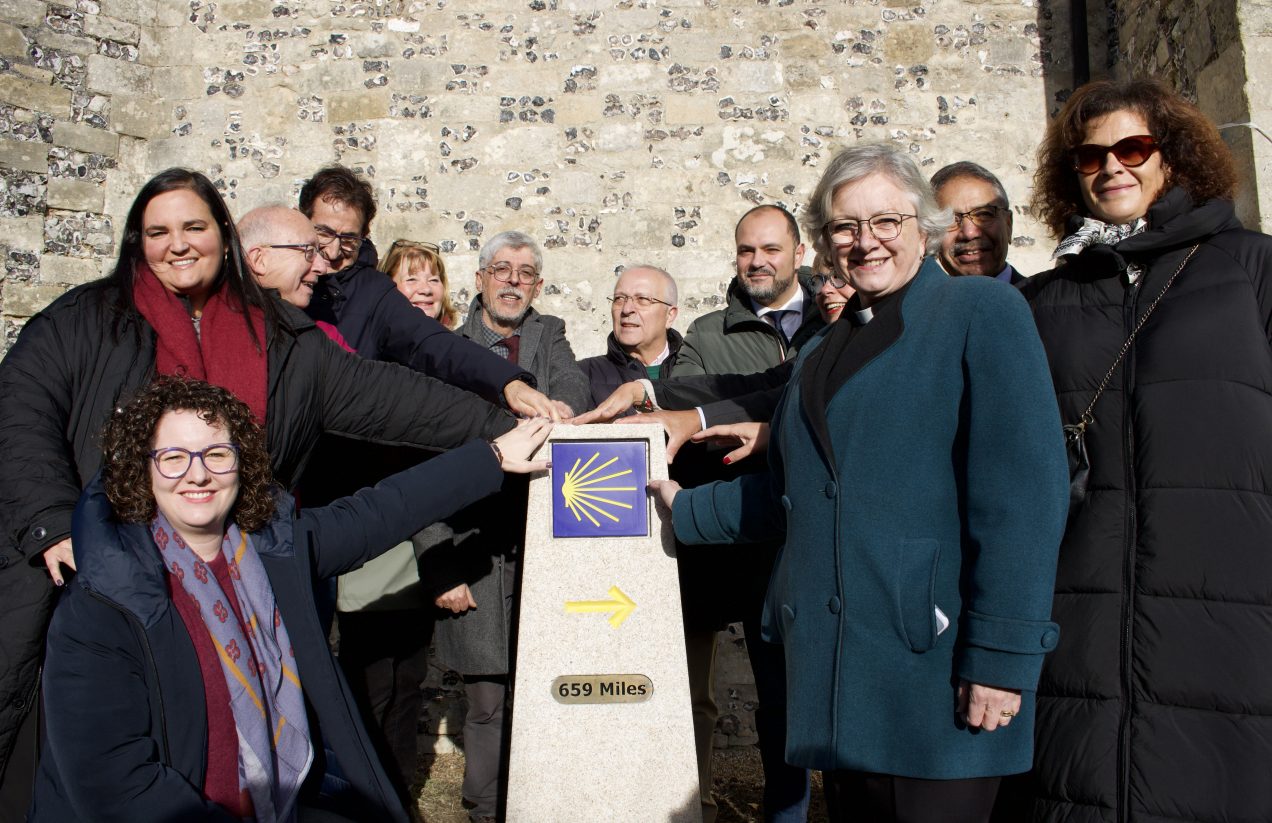A Camino waymarker has been blessed at St Bartholomew’s Church in Winchester, marking it as an important point on the historic pilgrimage route.
The new milestone is part of the 68-mile St James Way, the UK stage of the pilgrimage route to the Camino de Santiago in Spain.
The UK route begins at Reading Abbey and continues to God’s House Tower in Southampton. St Bartholomew’s is now the official starting point of the Winchester leg of the journey.
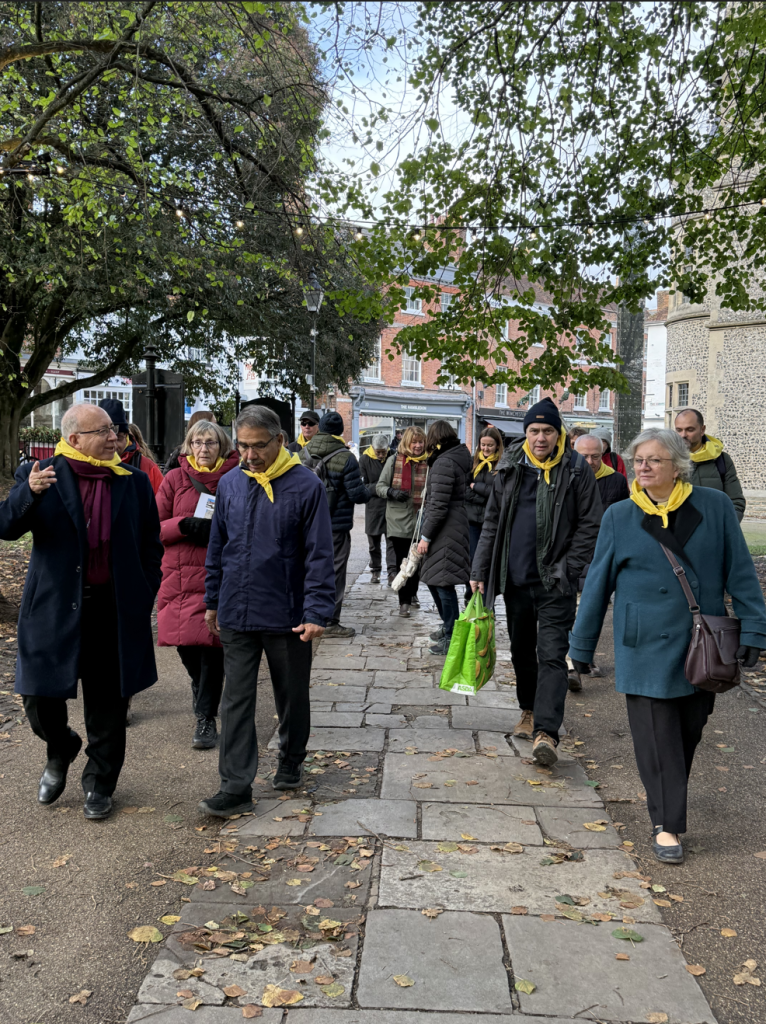

The route is believed to have been taken by medieval pilgrims heading to Santiago de Compostela and has recently grown in popularity. Last year nearly 500,000 people embarked on the journey.
Revd Karen Kousseff, Rector of St Bartholomew’s Church, said, “This is a very exciting moment for us. This church was founded in 1110 and has been welcoming pilgrims ever since then, but from today pilgrims will know that this is a significant place on the international map. It’s a great joy to continue this spiritual heritage of welcoming pilgrims. People do pilgrimages for all kinds of reasons, not just religious, but I hope that when they pass through here, they will find something of the presence of God and strength on their journeys, and that whatever ups and downs they go through in life, God will be leading them and giving them the perseverance and the strength for the journey.”
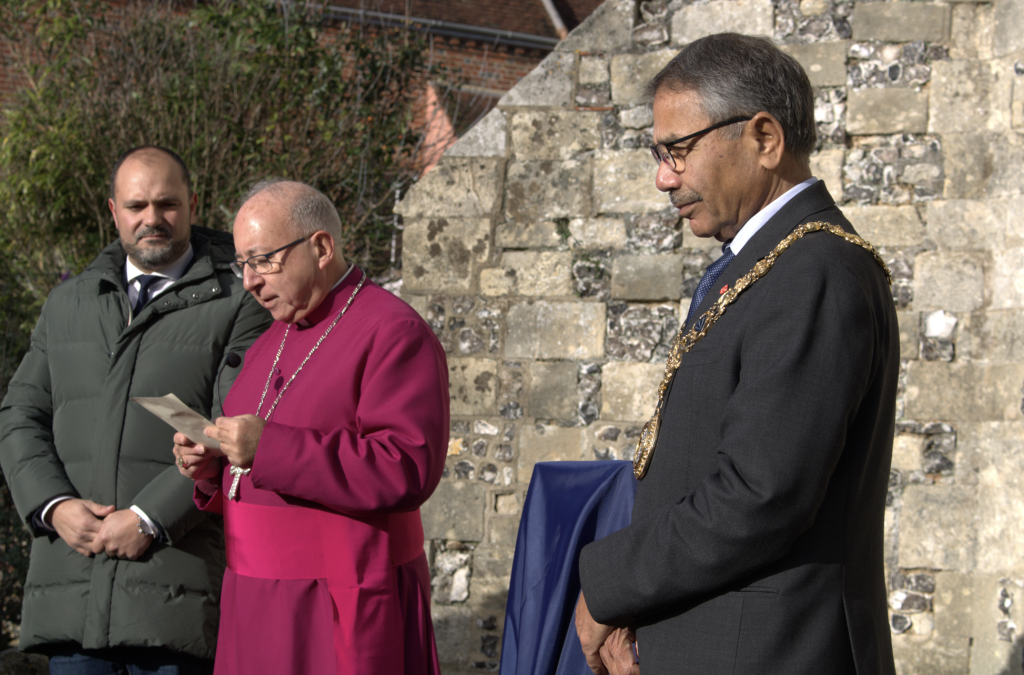
The granite milestone maker was erected in the churchyard following a more accurate calculation of distances by the authority in Galicia in Spain, who manage the route. It is 100km on foot from St Bartholomew’s Church to Santiago, which is the minimum distance a pilgrim must complete in order to gain a coveted Compestela certificate from the pilgrim’s reception office.
The installation was marked by a visit from a delegation from the Galician Government and the Provincial Council of A Coruna in Spain, who gifted the marker to Winchester. The Mayor of Winchester, Councillor Sudhaker Achwal also attended, along with members of the congregation, walkers, representatives from the city council and the Confraternity of St James which supports pilgrims during their journey.
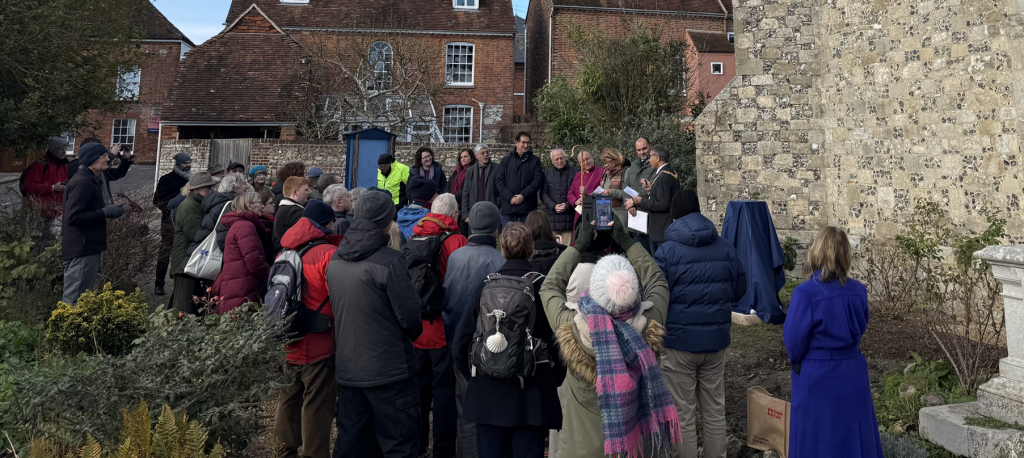
Susan Sargeant from the Confraternity of St James added, “I think that a pilgrimage is different from a hike. Some people walk because they have a faith, others have no faith. A lot of people walk because they face bereavement, breakups and want some solitude. It’s good for your mental health to be out there. You can engage with other pilgrims or not, and it’s a connection with churches and with historic routes from medieval times and you’re walking in their footsteps. It also embraces the church’s local communities so that they also benefit from the Camino.”
Pilgrim’s must also provide evidence of at least two stamps per day, collected at chapels, churches, cathedrals, visitor attractions and cafes in a pilgrim’s passport. A new stamp was also unveiled at St Bartholomew’s. Other churches in the diocese are also on the famous route.
The church is one of only four sites in England where the official milestone can be found. It was blessed by Bishop David Hamid, suffragan Bishop in Europe and was followed by a mini pilgrimage, with those present walking from St Batholomew’s to the Hospital of St Cross, which is also on the pilgrim’s route.
